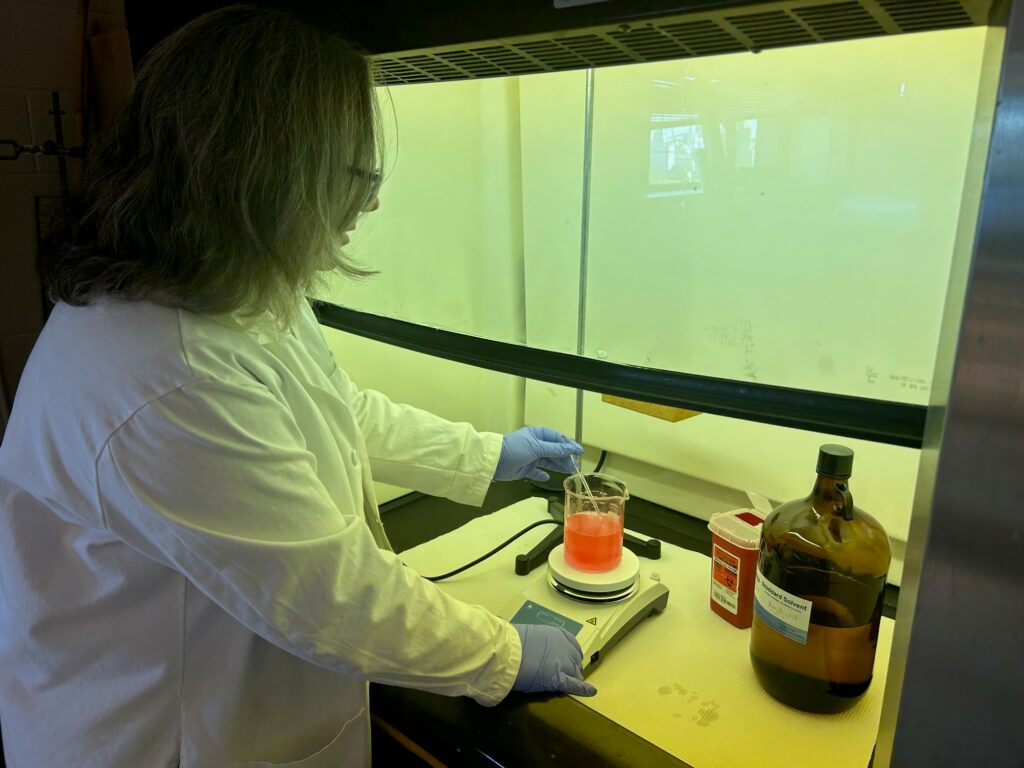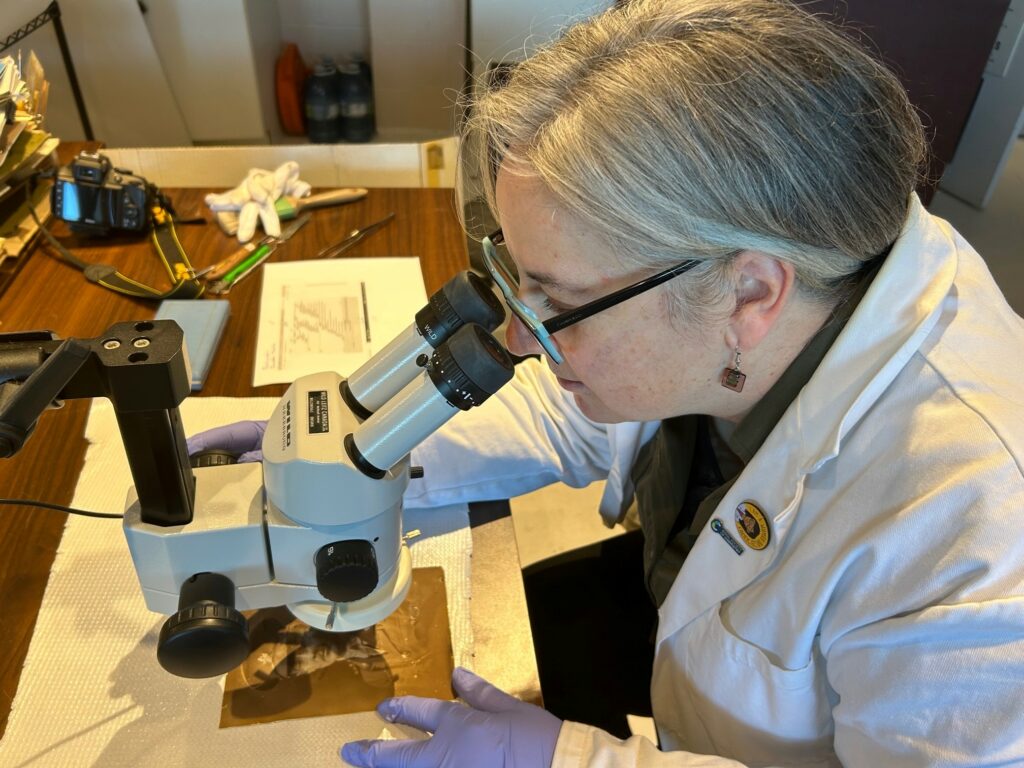 November 3rd is Ask a Conservator Day. To celebrate, we’ve asked Dee Stubbs-Lee some questions on her experience as a conservator for the New Brunswick Museum:
November 3rd is Ask a Conservator Day. To celebrate, we’ve asked Dee Stubbs-Lee some questions on her experience as a conservator for the New Brunswick Museum:
What is conservation?
Conservation is the art and science of preserving objects of our cultural or scientific heritage for the future. The Canadian Association of Professional Conservators (CAPC) offers the following detailed explanation of conservation: https://capc-acrp.ca/en/what-is-conservation.
What’s the difference between restoration and conservation?
Restoration is focused mainly on the aesthetics of an object and aims to return something to its appearance at an earlier time. Conservation is based on the scientific analysis of collections deterioration and aims to stabilize cultural property with a minimal amount of intervention while retaining as much of the original material as possible and carefully documenting the materials and processes. Conservation is essentially concerned with slowing the rate of change over time.
What’s been your biggest conservation challenge?
Every artifact or specimen presents its own unique set of challenges, but they are all subject to damage to one degree or another by the combined effects of various “Agents of Deterioration” (pests, water, gravity, pollutants, light, etc.), depending on their chemical and physical make-up. Facilities issues (such as inadequate space, environmental control, and fire suppression as well as ageing building issues) pose some of our greatest challenges for protecting and long term stewardship our collections, which is why these factors are critically important to address in the design of our renewed NBM facility.
What’s the oldest thing you’ve ever conserved?
Age does not directly correlate with difficulty of conservation, however I have worked on a number of fascinating semi-fossil walrus specimens for the NBM’s Geology and Palaeontology section that are thousands to tens of thousands of years old.
What does it take to become a conservator?
Conservation is a fascinating and unique field that combines three very different areas of expertise: the arts (for context), the sciences (to understand the mechanisms of deterioration), and fine craft (for the all-important hand skills). Typically, the position of Conservator requires an undergraduate degree in a discipline related to the type of collections, followed by graduate-level study in conservation or conservation science and advanced internships working alongside established conservators. It’s also important to have excellent attention to detail and a fair bit of patience. Conservators working in larger museums often specialize in one type of artifact, for example textiles or paintings. In mid-sized museums like the NBM, we address a wider range of materials. Once conservators have a few years of practical work experience beyond their studies, they can apply for accreditation by a professional organization such as the Canadian Association of Professional Conservators (www.capc-acrp.ca), which involves a rigorous peer-review process, an obligation to abide by professional codes of ethics, and a requirement for ongoing professional development. One of the things I love most about my job is that every day I learn new and interesting things to help me care for our collections.

